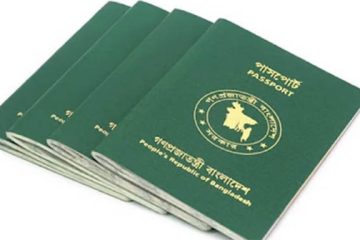The fishermen communities of Savar and Dhamrai Upazilas have been forced to change their profession in the last 10 years due to continuous decrease in catches in the river Bangshi while local people are reluctant to take fishes of the polluted river.
Let alone the reduced flow of water through Bangshi, the industrial effluents drained into the river from the mushrooming factories along its banks made its water uninhabitable for the fishes, said Joygopal Barman, who left fishing along with his two brothers. They now sell fishes.
Joygopal said he sold away all his fishing gears about 15 years back. ‘Now the fishermen from villages Chaklagram, Gopinathpur and Ghugudia in Savar live by selling fishes they collect from the wholesale markets at Islampur and Nayarhat in Dhamrai and Savar Upazilas.’
Once a fisherman, Palan Rajbangshi of Ghugudia village has now become a goldsmith while Md Hasan Ali of Chaklagram today earns his living as a truck driver instead of fishing he used to do over a decade ago.
River Bangshi has lost most of its fisheries after the DEPZ was set up 27 years back, local people explained.
Even a quarter century ago, fish from river Bangshi were supplied to faraway bazars through the wholesale markets at Islampur and Nayarhat, recalled Joygopal. ‘But you can hardly find any fish from Bagshai in the markets these days.’
Local people also became reluctant to buy fishes caught from the river as they stink even after cooking, said Joygopal.
Madhav Chandra Barman, younger brother of Joygopal, said, ‘About 5,000 kg of fishes used to land everyday on the Nayarhat wholesale fish market in Savar Upazial, whereas another 1,000 kg fish came to the Islampur market.’
Madhav, also a sub-contractor engaged by fish wholesaler Kalyanprada Sarkar at Islampur market, pointed out that most of the supply in the markets nowadays consist of Pangash and Koi, bred and nursed at fish farms in Rajshahi, Sathkhira and Maymanshingh districts.
The supplies also include carps imported from India and Myanmar and Hilsha coming from Barisal district, he added.
Wholesaler Kalyanprada Sharkar said, ‘A great quantity of Hilsha fish once used to be caught from river Bangshi, which was one of the major routes for the migration of Hilsha toward the upstream Padma River… I’m talking about 25 years ago.’
‘It’s a pity that Hilsha has stopped using the route through Bangshi as the river bed is not so deep now’, he added.
Senior Upazila fishery officer Nizam Uddin Ahmed told New Age that fish catch from rivers, canals, beels (depressions) and floodplains in Dhamrai area has drastically fallen due to industrial pollution and earth filling of the floodplains.
‘Five years back, the rate of catch from the Bangshi and its canals in the pick season between December-January was about 5 kilograms per decimal, but it has fallen to less than 0.5 kilograms per decimal now’, said Nizam Uddin.
Fishes have virtually disappeared from the beel areas which gradually became dewatered, he said.
He pointed out that most of the floodplains in the Upazila had been filled and elevated for setting up industries and modern housing estates.
As most of the floodplains are recorded as private properties, it is a difficult task for the government to stop earth filling over them, he added.
The official said proper execution of the Protection and Conservation of Fish Act, 1950, could minimise earth filling over floodplains although it contained many loopholes for evading compliances.
Meanwhile, local people in Dhamrai municipal area, speaking on condition of anonymity, told New Age that most of the Shatrai floodplain, popularly known as the Shatrai chak, and a canal adjacent to it were filled with river-sands, brought through a mile-long dredging pipe, by housing projects like Amin Model Town and Dhansiri Housing Project.
Jaynal Abedin, a rickshaw puller in the municipal area, said only a pond-like water body now remained after the earth filling at the Chotochandrail chak in Dhamrai was started one- and-a-half year ago.
‘Some industrial units are being built by influential people on the now elevated area covering most of the floodplain once known as the Chotochandrail chak’, said Jaynal Abedin.
Local people in Chotochandrail area said some factories including Abdul Momen Ltd. and Fuji Ink Ltd. were recently built on the floodplain at Chotochandrail.
Earth filling conducted through long dredging pipes had also converted a number of floodplains in the area—such as Borochandrail Chak and Taltali Chak—into housing and industrial plots, they alleged.




















